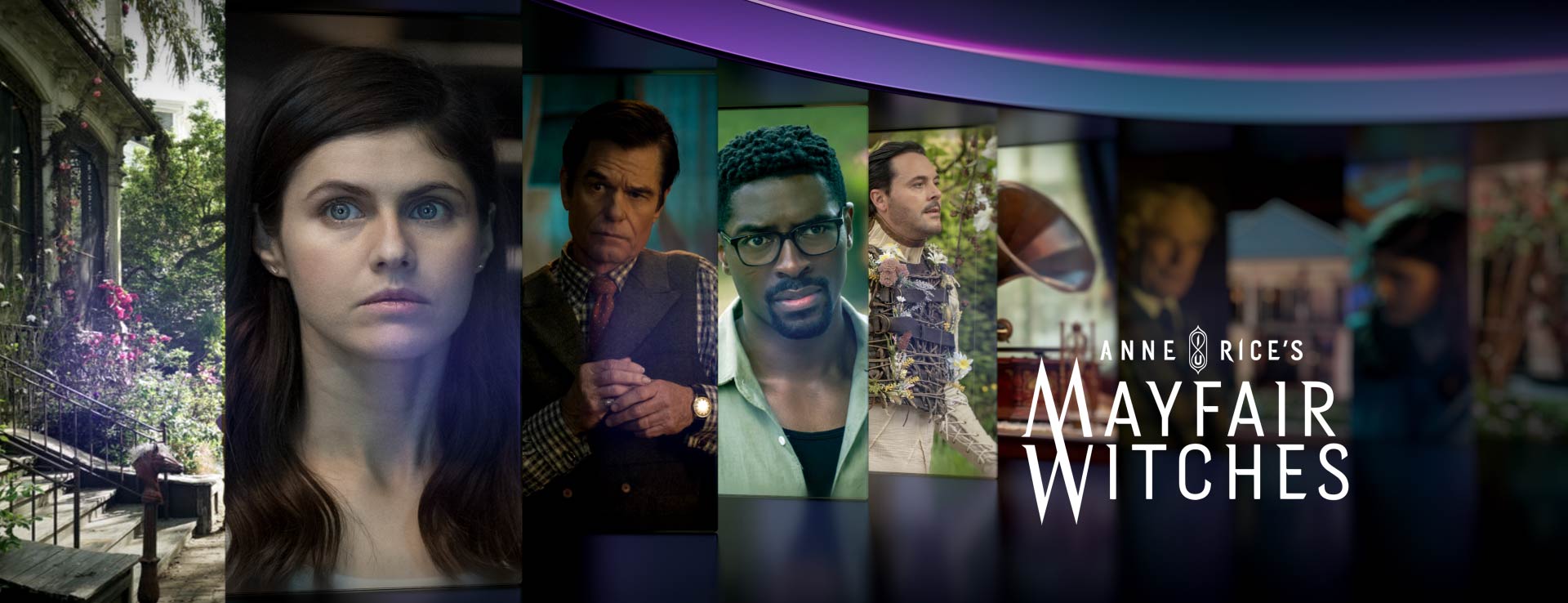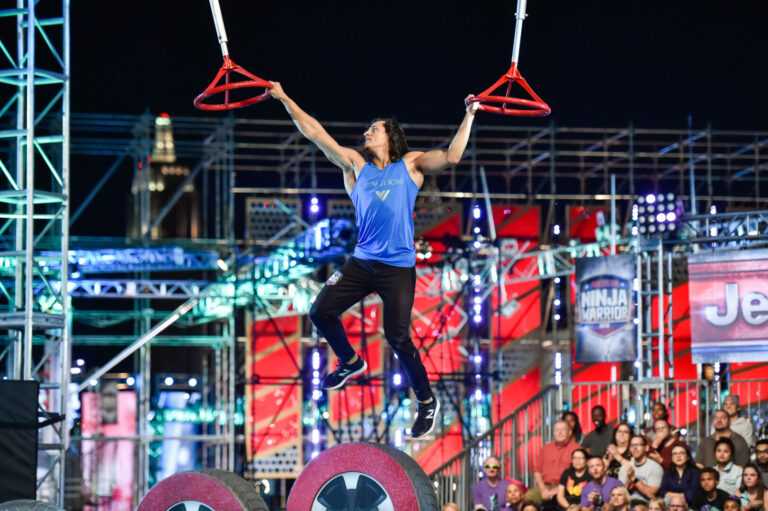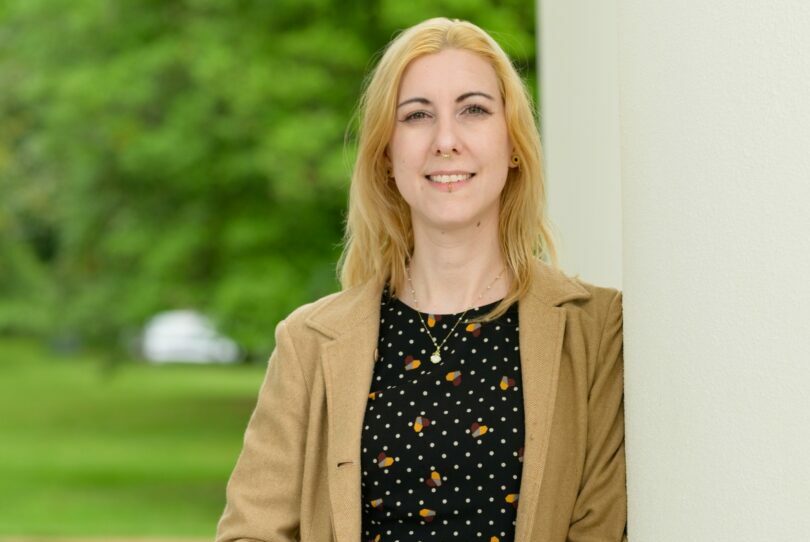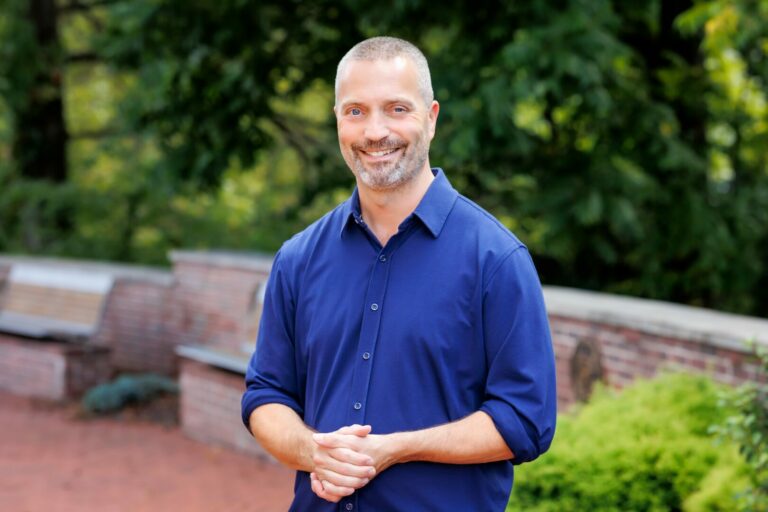Muriel SeoYeon Choi shared their story and experiences with us recently and you can find our conversation below.
Muriel SeoYeon, really appreciate you sharing your stories and insights with us. The world would have so much more understanding and empathy if we all were a bit more open about our stories and how they have helped shaped our journey and worldview. Let’s jump in with a fun one: What are you most proud of building — that nobody sees?
One project that comes to mind is the AMC Networks Upfront 2025. The event is designed to showcase AMC’s programming to advertisers, and while the audience only sees the polished final presentation, so much invisible work goes into making that moment possible.
I was responsible for 2D/3D design and animation that gave the presentation a consistent visual identity. My role was to take content that ranged from dramas to unscripted shows and build a design system that tied everything together. When the lights go up and the presentation plays smoothly, no one in the room is thinking about how many hours went into refining transitions or making sure the motion felt both bold and legible—but those details are what make the brand look confident.
It’s work I’m proud of because it’s not about individual recognition. It’s about building something that ensures a major network communicates its value clearly to the industry. Even if most people never know my name was attached, the impact of that design is something I carry with pride.
Can you briefly introduce yourself and share what makes you or your brand unique?
Hi, I’m Muriel SeoYeon Choi, a motion designer based in New York. I specialize in 2D/3D design and animation, creating visuals that connect storytelling, technology, and brand identity.
Right now, I’m working at BGSTR (BigStar), where I’ve had the chance to contribute to exciting projects like the AMC Networks Upfront 2025, the AMC Tech Breakfast 2025, and History’s Greatest Mysteries Season 6. What I love about this work is taking something complex—whether it’s new advertising technology or a cinematic narrative—and translating it into visuals that feel clear, engaging, and memorable.
I’m originally from South Korea, and my journey into motion design has always been about finding ways to make stories resonate visually. At BGSTR, I get to be part of a team that works on projects with big cultural impact, and I’m proud that my role is about shaping the details audiences might not notice but absolutely feel.
I’m continuing to expand my portfolio with work that not only informs and inspires but also builds bridges between creativity and technology.
Thanks for sharing that. Would love to go back in time and hear about how your past might have impacted who you are today. What’s a moment that really shaped how you see the world?
One moment that shaped how I see the world was when I moved from South Korea to the United States to pursue my career in design. Suddenly, I was surrounded by people from completely different cultures and creative backgrounds. It taught me that there isn’t just one way to tell a story—there are countless perspectives, and each one can bring a new layer of meaning.
That realization changed how I approach my work as a motion designer. Whether I’m creating visuals for a live industry event like AMC Networks’ Upfront or designing graphics for a documentary series, I always think about the audience’s perspective and how design can make the message resonate universally. For me, design isn’t just about visuals—it’s about building connections across different people and cultures.
What’s something you changed your mind about after failing hard?
After graduation, I really thought landing a job would just fall into place. When it didn’t, I started to seriously think about going back to Korea. I was leaning on my parents financially, and that came with a lot of guilt and pressure. Part of me felt that if I returned home, it would mean I had failed.
What changed my perspective was something my dad said. He told me, ‘If you decide to come back, I’m not going to scold you. If it feels too hard, it’s always okay to return home.’ Hearing that lifted such a heavy weight off my shoulders. It made me realize that going back wouldn’t mean failure, and that failing doesn’t define me. That simple reassurance gave me the strength to keep pushing forward, and it’s something I carry with me whenever I face challenges now.
I think our readers would appreciate hearing more about your values and what you think matters in life and career, etc. So our next question is along those lines. Whom do you admire for their character, not their power?
I deeply admire Ryuichi Sakamoto—not for his fame or influence, but for his character. What resonates with me is the humility and honesty he carried into his music and life. Even at the height of his career, he never chased power or prestige; instead, he used his platform to explore beauty, raise awareness about the environment, and create with sincerity.
His ability to remain true to himself while still impacting people all over the world showed me that real greatness comes from character, not authority. That’s the kind of creative spirit I want to carry forward in my own work.
Thank you so much for all of your openness so far. Maybe we can close with a future oriented question. If you laid down your name, role, and possessions—what would remain?
If I stripped away my name, title, and everything I own, what would remain is the way I approach creating. I’ve always believed that design and motion are less about prestige or labels and more about how you treat the process—being curious, staying open, and putting honesty into what you make.
At the end of the day, I think what lasts isn’t the job title or the awards, but the feeling people get from the work and the integrity behind it. That’s the part of me that would remain.
Contact Info:
- Website: https://www.murielchoidesign.com/
- Instagram: https://www.instagram.com/collage_muriel/
- Linkedin: https://linkedin.com/in/murielseoyeonchoi





Image Credits
Portrait courtesy of Sphia Lee
Design Contribution: Muriel SeoYeon Choi | Image Courtesy of BGSTR
so if you or someone you know deserves recognition please let us know here.




